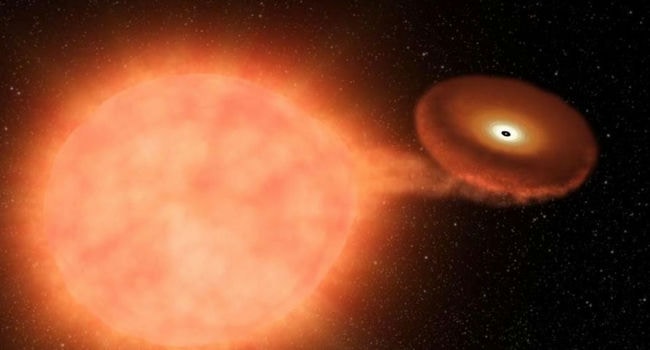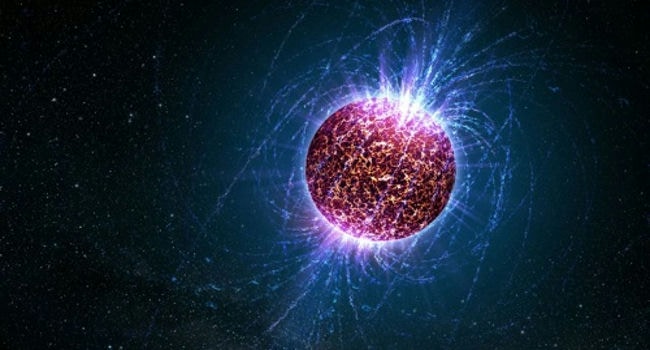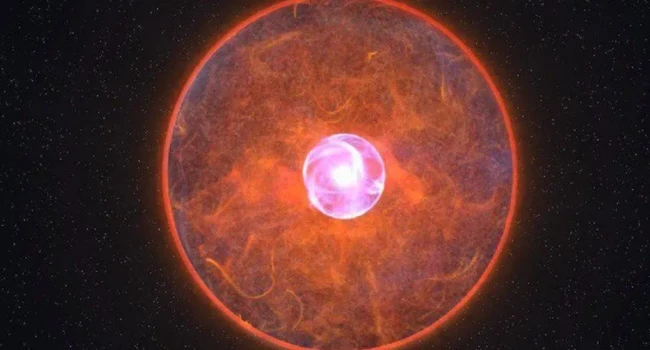From the faintest red dwarfs to the brightest blue giants, the universe is home to a variety of stars that come in all shapes and sizes. But there are some stars that stand out from the rest for their strange characteristics and peculiar behavior. Here are 10 of the strangest stars in the universe.
10- Vega

The Vega star, one of the strangest stars in the universe, is an example of an active star. It is a blue-white star of spectral type A0V, and is the fifth brightest star in the night sky, making it visible to the naked eye. Vega has a surface temperature of 9,500 Kelvin, giving it its azure hue. The star is relatively young, estimated to be between 200-450 million years old. It is also particularly fast-spinning, with an estimated rotational velocity of 215 kilometers per second. Vega is also one of the most luminous stars, emitting around 40 times more light than our own Sun. It is around 25 light years from Earth, making it one of the closest stars to our solar system.
9- PSR J1748-2446ad

One of the strangest stars in the universe is PSR J1748-2446ad. It spins incredibly fast, rotating 716 times per second! That’s faster than a kitchen blender. It’s so fast that it has a radius of only 18.5 km, making it the smallest known star. Its magnetic field is also incredibly powerful, with a strength of around 4 trillion gauss! This is a thousand times stronger than the magnetic field of the Earth. It’s so powerful that it accelerates particles to almost the speed of light. Also incredibly hot, with temperatures reaching 28 million Kelvin in some parts. It’s so hot that its surface radiates X-rays, making it visible from Earth. This star is truly unique and it’s still a mystery as to how it formed and why it’s spinning so fast.
8- V838 Monocerotis

V838 Monocerotis is located in an outer region of the Milky Way, about 20,000 light years away from Earth. This star is unique due to its unusual behavior. It was first discovered in 2002, when it suddenly brightened for several months. Since then, the star has continued to brighten and dim erratically. It also appears to be surrounded by an expanding shell of material. This material is thought to be composed of dust and gas that was expelled by the star in previous outbursts. Scientists are still trying to understand the cause of these outbursts and the nature of the material surrounding the star. V838 Monocerotis is truly one of the most mysterious and strangest stars in the universe.
7- Tabby’s Star

Photo Credit: The Wire
Tabby’s Star is one of the strangest stars in the universe. It is located in the constellation Cygnus, around 1,280 light-years away from Earth. Also known as KIC 8462852, or Boyajian’s Star. It first attracted attention in 2015 when astronomers noticed that its brightness dimmed dramatically. Observations from various telescopes have shown that its light output has changed erratically over time. The star has experienced several periods of dimming and brightening, and scientists have yet to explain why. Some theories suggest that a swarm of comets, or a giant planet, is orbiting the star, obscuring its light. Other theories suggest that a large, artificial structure, such as a Dyson sphere, may be orbiting the star. Whatever the cause, Tabby’s Star remains a mysterious and fascinating celestial object.
6- V4334 Sagittarii

Photo Credit: Universe Today
This star, also known as “Sakurai’s Object,” is located in the Sagittarius constellation and is about 5,000 light years away from Earth. It is one of the oldest stars known and is located in the Milky Way. V4334 Sagittarii is a white dwarf, a remnant of a star that used to be a red giant. What makes this star so strange is that its composition is unlike any other known star. It is made up of a strange combination of materials, including carbon, nitrogen, oxygen, and sulfur.
This combination is so rare that it has been dubbed a “carbon-rich star.” The star is also believed to have undergone a strange transformation, which is why it is so unique. It is believed to have gone through a late thermal pulse, a process where the star briefly increases in brightness and then fades back down. This process is believed to be responsible for its unique composition.
5- Calvera

Calvera, is a mysterious celestial body. It is incredibly bright yet extremely small, making it difficult to study. Scientists believe that it is a rare type of star known as a blue dwarf. This type of star is incredibly dense and has a high surface temperature. Calvera’s surface temperature is estimated to be over a million degrees Celsius, making it one of the hottest stars known. The star is also incredibly small, only a few hundred kilometers in diameter.
This is much smaller than our own Sun, which is more than 1.4 million kilometers in diameter. Calvera’s brightness is also astonishing; it is over a million times brighter than our own Sun. The star is so bright that it can be seen from Earth with the naked eye. Despite its brightness, scientists are still unsure of its exact age and composition. It is believed to be very young, perhaps less than a million years old, and it is composed mostly of hydrogen and helium.
4- Diamond Star

The unique thing about the PSR J1719-1438 and its planet is that it is thought to have been created by the fusion of two extremely dense objects called quark stars. Quark stars are believed to form when two neutron stars, which are made up of neutrons, merge and annihilate each other, leaving behind a tiny, ultra-dense hunk of quark matter which is then pulled into a 10-hour orbit around the larger star. This process likely stripped away the gasses around the star, and the resulting pressure likely turned it into the diamond-like planet we observe today.
This is the strangest combination of a pulsar and planet that exists and it has opened up an entirely new realm of astrophysical possibilities. What else can be created under these extreme conditions? We are only just beginning to explore the boundaries of this strange system and the answers it holds.
3- Thorne-Żytkow object

The Thorne-Żytkow object is one of the strangest stars known to science. It is a rare hybrid star, created when a red supergiant star engulfs a neutron star. This newly formed star is unique, with the supergiant’s outer layers surrounding the neutron star’s incredibly dense core. The star is incredibly luminous and incredibly hot, glowing in both x-rays and visible light. Its temperature is estimated to be around 5 million degrees Celsius. Its composition is that of a strange mix of elements, including some which are typically only found in the cores of supernovae. The star is also incredibly rare, with only two known examples currently in existence. Its discovery has provided new insight into the formation of hybrid stars, as well as how stars evolve over time. It has also helped scientists to understand the incredible power of neutron stars, and the role they play in the universe.
2- RZ Piscium

RZ Piscium is an intriguing star. It is a young, variable star located about 550 light-years away from Earth in the constellation of Pisces. One of the most luminous stars in the Milky Way, with a luminosity about 250,000 times that of the Sun. It is also one of the strangest stars, exhibiting highly variable and unpredictable behavior. Its light output can vary from five to ten times its normal luminosity in just a few days. RZ Piscium’s variability has been explained by a variety of theories, including the presence of an unseen companion star or an accretion disk around the star. Its spectrum has been studied extensively, revealing a variety of unusual features that have yet to be fully explained. RZ Piscium continues to fascinate astronomers with its unpredictable behavior and remarkable properties.
1- Stephenson 2-18

The largest known star in the universe, Stephenson 2-18 or RSGC2-18 measures an astounding radius of 1.5 billion kilometers. This is roughly equivalent to the orbit of Saturn around the sun! This behemoth of a star belongs to a class of stars known as red supergiant stars and is located at a distance of around 17,000 light years from Earth. The star has a mass of around 40 times that of our Sun and is around 8 million years old. The star shines brightly with an apparent magnitude of around 11.7 and is an incredible 10,000 times brighter than our Sun.
Its surface temperature is around 3,500K and its luminosity is almost 2 billion times greater than that of the Sun. The star is also classified as a hypergiant, which means that it is burning through its fuel at an incredibly rapid rate. It is estimated to have a lifespan of only a few million years, which is incredibly short in comparison to stars like our Sun. RSGC2-18 is an impressive example of the immense power and beauty of the universe and a reminder of the transitory nature of life.


